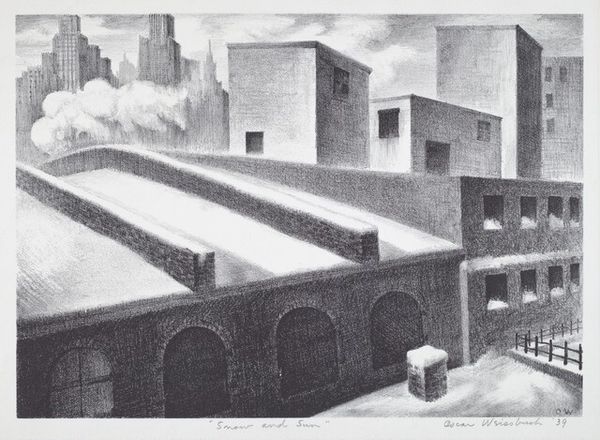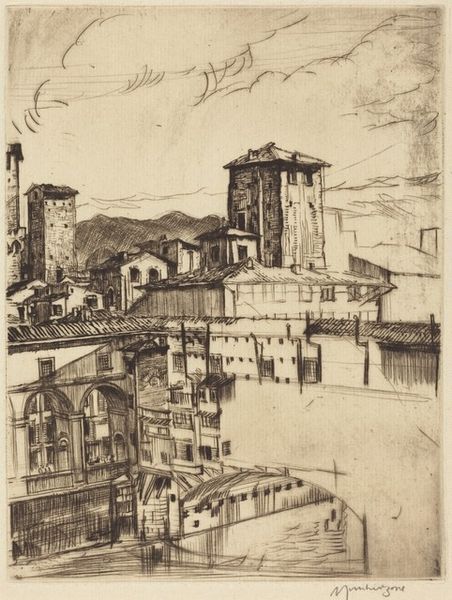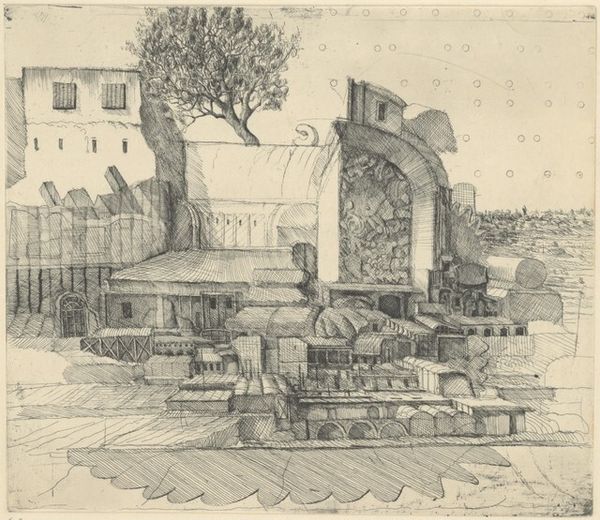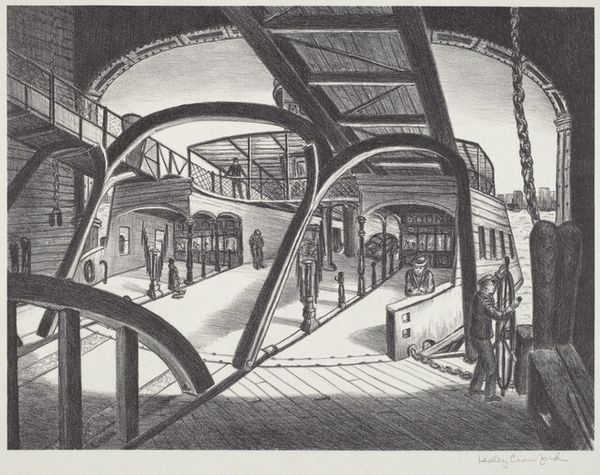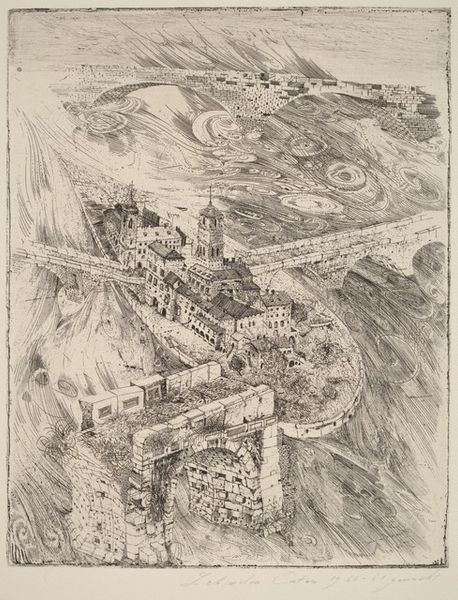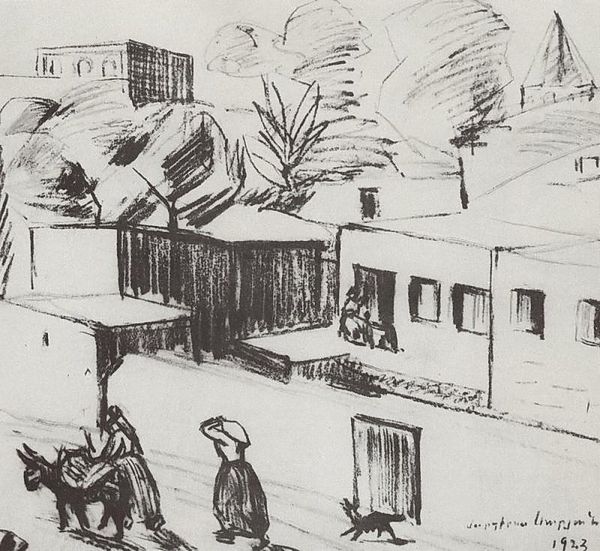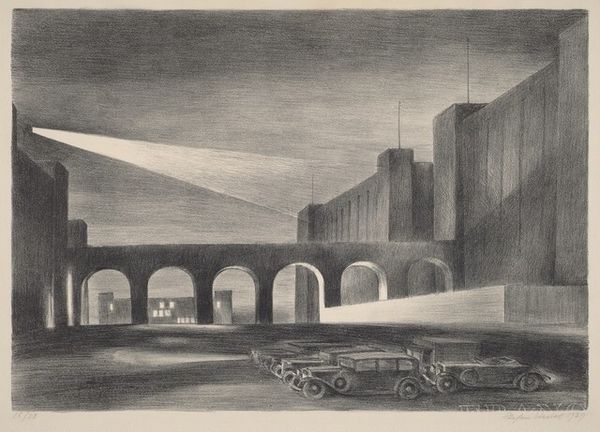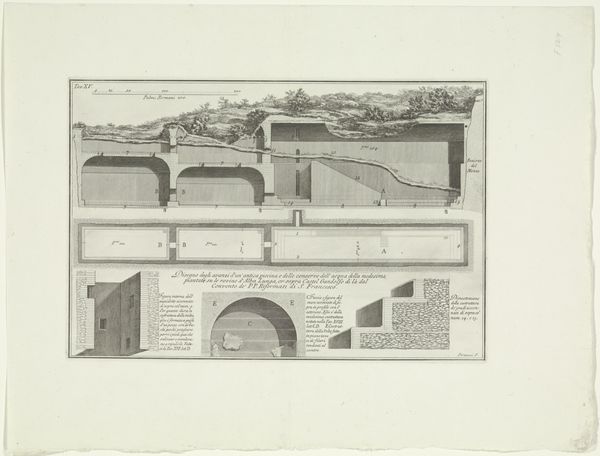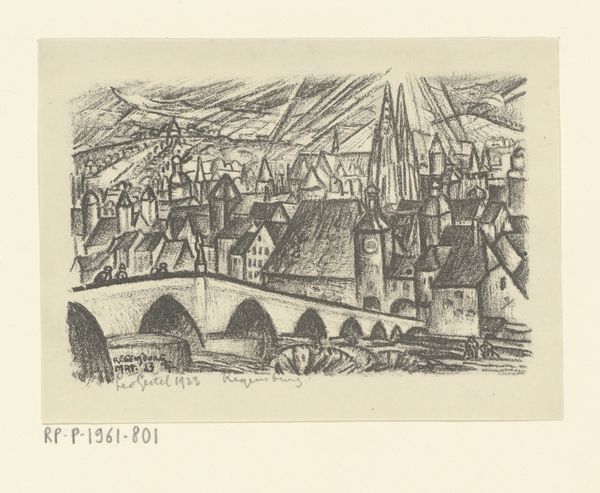
drawing, print, pencil, graphite
#
pencil drawn
#
drawing
# print
#
pencil sketch
#
pencil drawing
#
pencil
#
graphite
#
cityscape
#
modernism
#
realism
Dimensions: image: 225 x 345 mm sheet: 316 x 479 mm
Copyright: National Gallery of Art: CC0 1.0
Charles Rosen made this drawing of the Roundhouse, sometime in the first half of the twentieth century, using graphite on paper. Look at the density of those marks, and how they create the composition. The artist is working reductively, but also additively, using his tone to create a dynamic image. The materiality of the graphite lends itself to the industrial scene; you can almost feel the grit and grime of the trains and the buildings. Notice the way the artist has built up the tone around the cylindrical structures in the foreground. Look at how the graphite catches the light on the paper, particularly on the roof. The mark making is actually quite abstract, with small hatching marks built up to create a convincing representation. Rosen was associated with the Woodstock art colony, and he specialised in landscape painting. Like Edward Hopper, he finds beauty and interest in the overlooked aspects of the built environment. It shows us that art is not just about grand gestures; it can be found in the everyday, ordinary spaces that surround us.
Comments
No comments
Be the first to comment and join the conversation on the ultimate creative platform.
